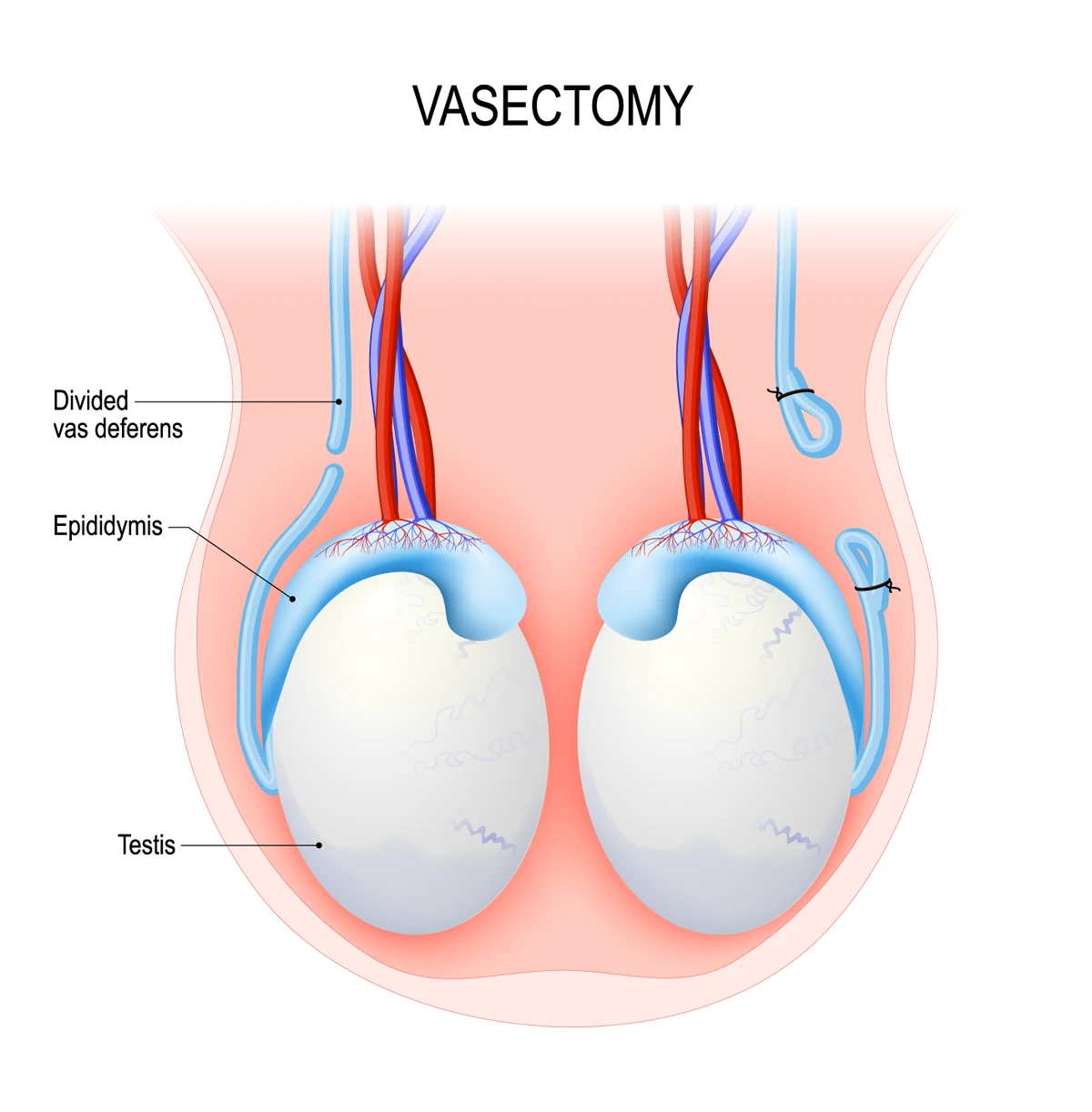Vasectomy & vasectomy reversal
Vasectomy is a low-risk, high-benefit method of permanent birth control for those who either want to avoid having children or are done having children. When you choose male sterilization, your sexual function won’t be affected and your recovery is likely to be quick.
During a vasectomy, the vas deferens – the tube that carries sperm to enter the semen during ejaculation – is cut and the ends are sealed. The procedure must be done on both (testes) to achieve male sterilization. A traditional vasectomy uses an incision to reach the vas deferens, which requires a scalpel.
No-scalpel vasectomy

Most vasectomy procedures are done using no scalpel. Instead of making an incision, the vasectomy surgeon uses a clamp to secure a section of the vas deferens very near the surface of the skin of the scrotum. The surgeon uses a needle to make a very small hole in the skin and the vas deferens is pulled outside your body to be cut and have the ends sealed.
No-scalpel vasectomies involve fewer risks and complications as well as less bleeding and scarring.
After a vasectomy, it can take some time before you’ll no longer have sperm in your semen. You’ll need to use another method of birth control during that time. Once your doctor has verified that your vasectomy procedure is working, its effectiveness as birth control will be as high as 99%.
What is a vasectomy reversal?
Sometimes people decide that they want to be able to have children after having had a vasectomy. Some people undergo a vasectomy reversal procedure if they experience pain in their testicles after a vasectomy.
A vasectomy reversal procedure reconnects the cut ends of the vas deferens so sperm can once again be released into the semen. The vasectomy reversal procedure is more complex than a vasectomy. To improve your chances of success, find a surgeon who has lots of experience with vasectomy reversal.
Vasectomy reversal success
Pregnancy success rates are best if the vasectomy reversal procedure is done within 10 years of the vasectomy procedure. Achieving a subsequent pregnancy also depends on your age and your partner’s age.
Vasectomy cost vs. benefit
Only you can decide if vasectomy is right for you by weighing vasectomy costs and benefits. Vasectomy reversal surgery is more complicated than vasectomy and it doesn’t always restore fertility. Treat the decision to have a vasectomy as if it’s final.
Get care
We help you live well. And we’re here for you in person and online.
